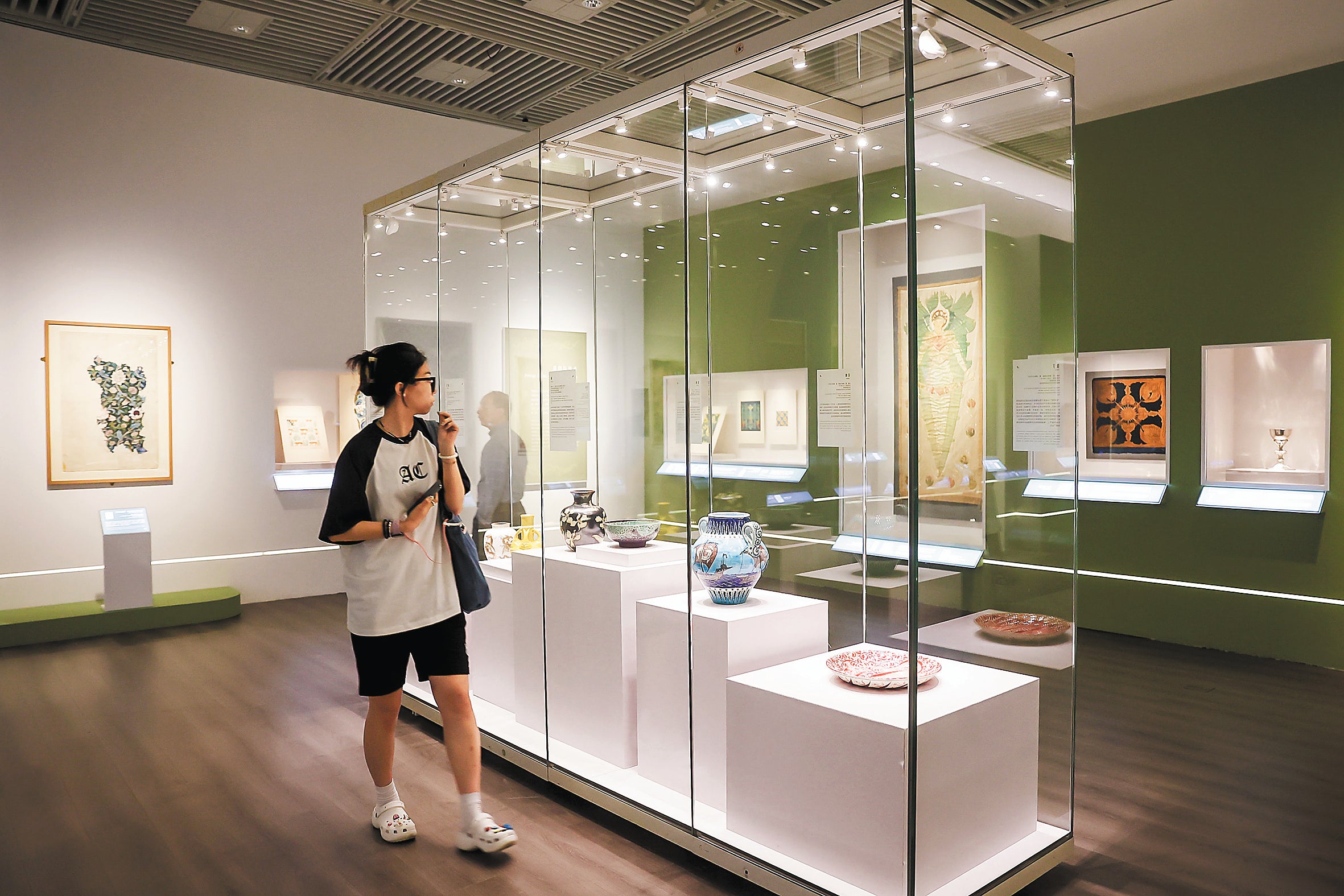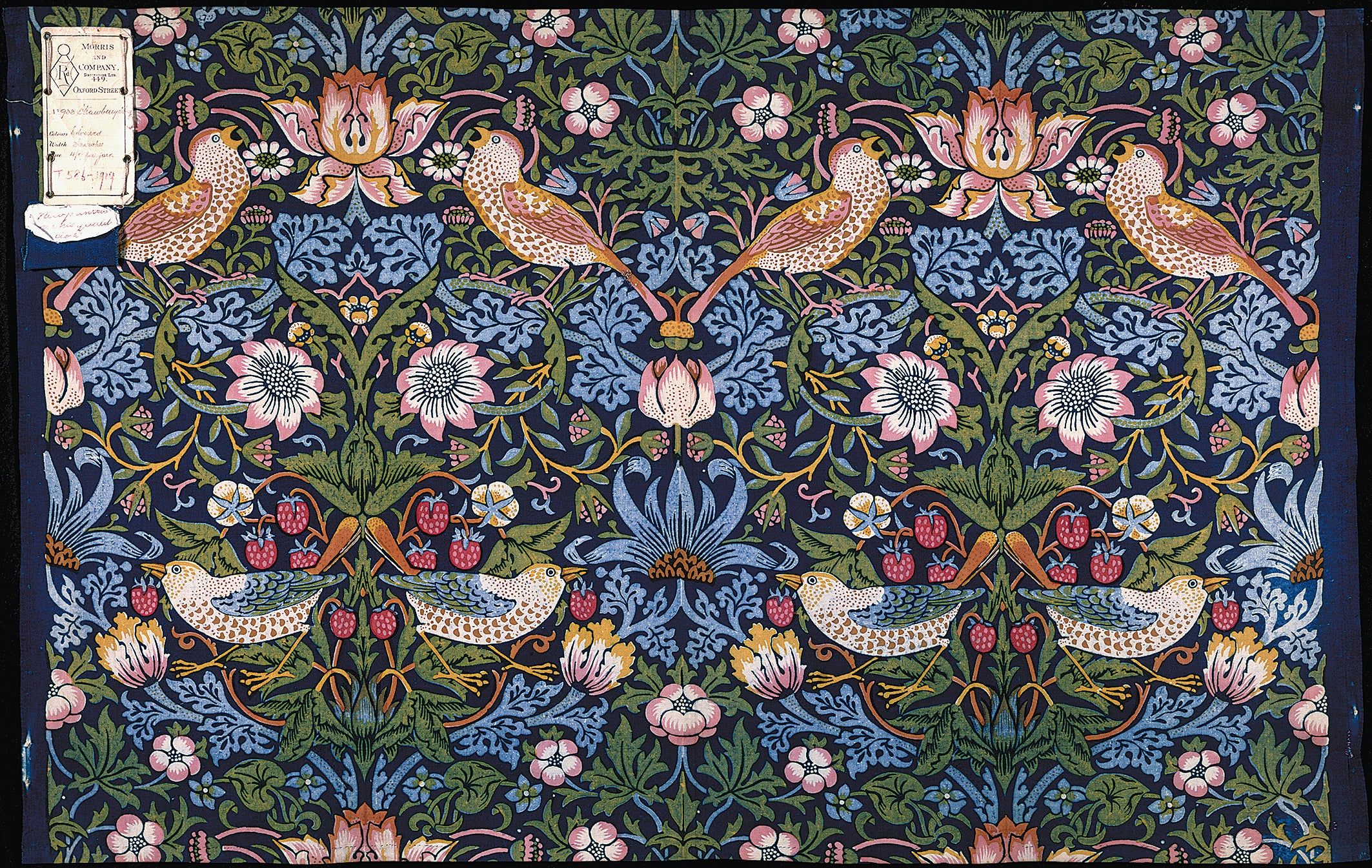Exhibition highlights early design innovation
THE ARTICLES ON THESE PAGES ARE PRODUCED BY CHINA DAILY, WHICH TAKES SOLE RESPONSIBILITY FOR THE CONTENTS

Curator Max Donnelly is glad that, after working for two and a half years, an exhibition introducing the British Arts and Crafts movement has opened in Nanjing, East China’s Jiangsu province, in May, 2023.
Nanjing Museum is the first venue for Beyond William Morris – British Arts and Crafts 1890-1920. Its China tour, which will also include Hebei Museum, Chengdu Museum and two more venues, will run until 2025.
“I’m particularly excited to see the exhibition is opening in Nanjing, because I understand that it is one of the largest museums in China, and one of the oldest, celebrating 90 years this year,” says Donnelly, curator of furniture and woodwork 1800-1915 at the Victoria and Albert Museum (the V&A) in London.
The exhibition explores the movement in Britain, which was inspired by renowned decorative art designer William Morris (1834-96), showcasing signature works by the most talented designers, craftspeople and manufacturers involved in the movement from 1890 to 1920.
The 100-plus exhibits, some of which are rarely seen in public, are carefully selected from the collections of the V&A Museum.
Visitors are able to see designs, wallpapers, textiles, furniture, ceramics, metalwork, jewellery and stained glass created by Morris and his daughter May, an embroidery designer and jeweller; English architects and designers C.F.A. Voysey and C.R. Ashbee; artist and book illustrator Walter Crane and Scottish architect and designer Charles Rennie Mackintosh, among others.
“It’s the first time for the classic work of William Morris and his followers to be exhibited in China. I’m sure it will be an artistic feast for the eyes of Chinese visitors,” says Tan Ping, director of Art Exhibitions China, adding that the exhibition will play a role in deepening cultural exchanges between China and the United Kingdom.

Nick Marchand, head of International Programmes at the V&A, takes Beyond William Morris as a good example of the institution’s history.
“We are excited about it connecting with new audiences in China, as well as the opportunity to visit cities and provinces we’ve not had the chance to take exhibitions to in the past,” he says.
For Chen Li, a curator at the Nanjing Museum, the main challenges during the planning and design of the exhibition concern exhibit protection and lighting.
Many of the exhibits are designs and textiles, which are sensitive to light and can only be exposed to light level below 50 lux.
“To best protect the exhibits, a label with a light box is especially designed to provide required light level for the exhibits as well as for visitors to be able to read,” Chen says. “During the setup, a Chinese lighting designer worked together with a representative from the V&A. As it’s well-designed, everything went well.”
Morris was among those who, along with John Ruskin, a famous English art critic during the Victorian era, helped formulate the ideas behind the movement, which revolved around the idea of the pleasure of making things, despite the Victorian era’s focus on industrial progress.
But Morris was different, because he not only preached the message, he practised it.
“Morris combined theory with practice,” says Donnelly.
Morris founded his own company in 1861, which later became known as Morris & Co. It was important, because he employed both artists and makers to design and make things, including wallpaper, furniture, stained glass, textiles, interior and exterior decor and printing limited-edition books.
While Donnelly mentions that Asian ceramics were a source of inspiration for the artists at the time, Chen says that, when Morris’s “contagious” ideas and work entered China through Japan in the early 20th century, Morris became one of the most well-known British cultural figures during that time.
“Chen Zhifo, a modern art educator, painter and designer, was so deeply inspired by Morris, as well as the Arts and Crafts movement in Britain, that he called for merging arts and crafts with industry and manufacturers to provide products that meet the needs of people’s daily lives,” Chen Li cites as an example.
Acclaimed Chinese artists and designers including Pang Xunqin, Lei Guiyuan and Zhang Guangyu were also inspired to design many classic works for commercial purposes, and publish relevant books, “laying the foundation for the development of modern architecture, furniture, interior design, graphic design and commercial art”, says Chen Li.
